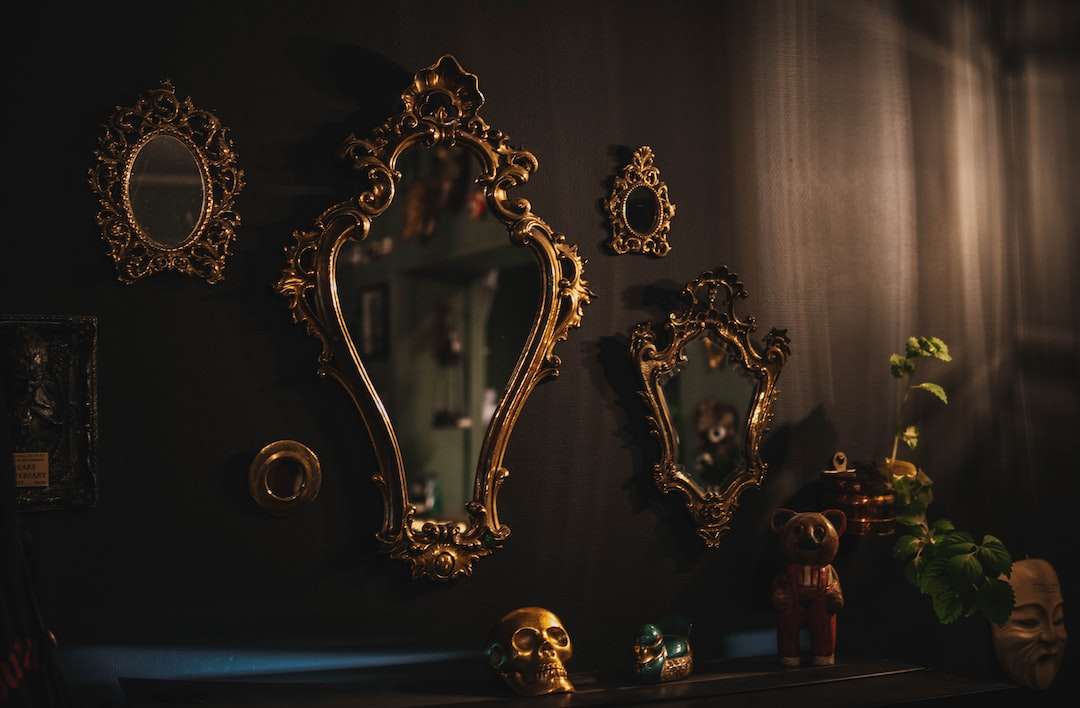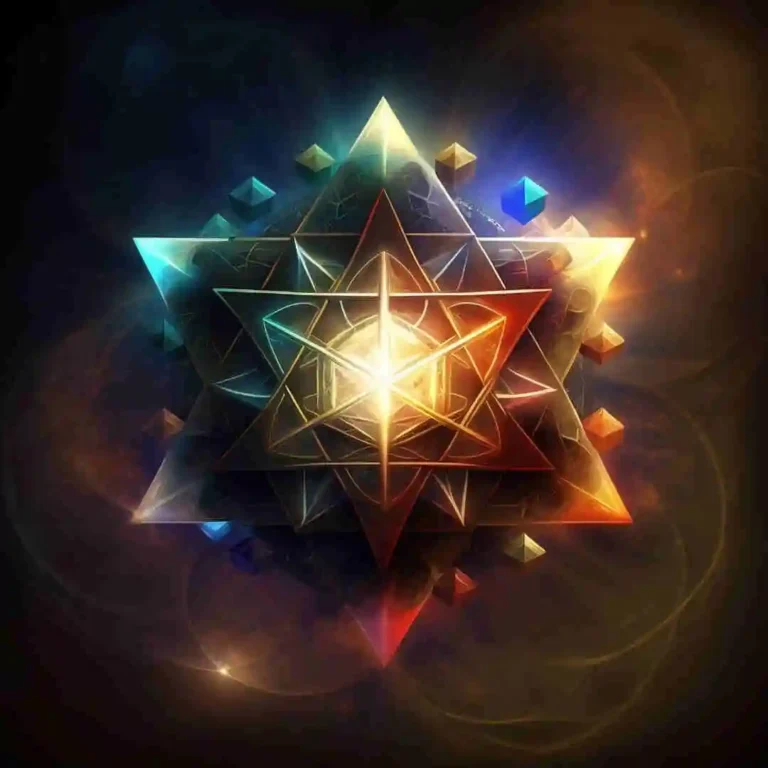Reflecting on Symbolism: The Deep Meanings Behind The Mirror

Symbolism is the use of symbols to represent ideas or qualities. It is a powerful tool used in literature, art, and culture to convey deeper meanings and evoke emotions. Archetypal symbols, on the other hand, are symbols that are universally recognized and have a collective meaning across different cultures and time periods. They tap into the collective unconscious and resonate with people on a subconscious level.
Symbolism plays a crucial role in literature, art, and culture as it allows creators to communicate complex ideas and emotions in a concise and impactful way. It adds depth and layers of meaning to a work, inviting the audience to engage with it on a deeper level. By using symbols, artists and writers can convey abstract concepts that may be difficult to express through words alone.
Key Takeaways
- Archetypal symbols are universal and timeless, representing fundamental human experiences and emotions.
- The mirror is a powerful archetypal symbol that reflects the self and serves as a gateway to the unconscious.
- The mirror can represent both vanity and truth, depending on how it is used and interpreted.
- The mirror is often used in literature and art to explore themes of identity, self-discovery, and transformation.
- Understanding the significance of symbolism and archetypal symbols can deepen our understanding of ourselves and the world around us.
The Mirror as an Archetypal Symbol
Archetypal symbols are symbols that have been present in human culture for centuries and have a deep-rooted meaning that transcends time and place. One such archetypal symbol is the mirror. The mirror has been used as a symbol in various cultures throughout history, representing different concepts and ideas.
The mirror is often associated with self-reflection and introspection. It is a tool that allows us to see ourselves as we truly are, both physically and emotionally. In many cultures, mirrors are believed to have magical properties, reflecting not only our physical appearance but also our inner selves.
The Mirror as a Reflection of the Self
The mirror is often seen as a representation of the ego, the conscious mind that is aware of itself. It reflects back to us our physical appearance, but it also reflects our thoughts, emotions, and beliefs. When we look into a mirror, we see ourselves as others see us, but we also see ourselves as we see ourselves.
The mirror can be a powerful tool for self-reflection. It allows us to examine ourselves objectively and see our strengths and weaknesses. It can also be a source of self-criticism and self-doubt, as we may focus on our flaws and imperfections. However, it can also be a source of self-acceptance and self-love, as we learn to embrace and appreciate ourselves for who we are.
The Mirror as a Gateway to the Unconscious
| Metrics | Description |
|---|---|
| Reflection | The act of looking at oneself in the mirror and seeing one’s physical appearance. |
| Self-awareness | The ability to recognize oneself in the mirror and understand one’s own emotions and thoughts. |
| Body image | The perception and evaluation of one’s own physical appearance based on societal and personal standards. |
| Self-esteem | The overall evaluation of one’s own worth and value as a person, which can be influenced by the mirror. |
| Psychological projection | The unconscious act of attributing one’s own thoughts, feelings, and behaviors to others, which can be revealed through the mirror. |
In addition to reflecting the conscious self, the mirror is also seen as a portal to the unconscious mind. The unconscious mind is the part of our psyche that contains thoughts, memories, and desires that are not readily accessible to our conscious awareness. It is the realm of dreams, symbols, and archetypes.
When we look into a mirror, we may catch glimpses of our unconscious selves. We may see aspects of ourselves that we were not aware of or have forgotten. The mirror can serve as a bridge between the conscious and unconscious mind, allowing us to explore and integrate these hidden aspects of ourselves.
The Mirror as a Symbol of Vanity
While the mirror can be a powerful tool for self-reflection and introspection, it can also be a symbol of vanity and narcissism. In many cultures, mirrors are associated with vanity and self-obsession. They are seen as tools for admiring one’s physical appearance and seeking validation from others.
The mirror can also be seen as a symbol of superficiality. It reflects only the surface level of things, focusing on appearances rather than deeper truths. It can be a reminder that what we see in the mirror is not always an accurate reflection of who we truly are.
The Mirror as a Symbol of Truth and Clarity

Despite its association with vanity and superficiality, the mirror can also be seen as a symbol of truth and clarity. It reflects back to us what is there, without judgment or distortion. It shows us the truth, whether we want to see it or not.
The mirror can be a tool for revealing the truth, both to ourselves and to others. It can help us see through illusions and false appearances, allowing us to see things as they truly are. It can also be a symbol of honesty and transparency, reminding us to be true to ourselves and others.
The Mirror as a Symbol of Illusion and Deception
While the mirror can reveal the truth, it can also be a symbol of illusion and deception. Mirrors can be used to create optical illusions, distorting our perception of reality. They can also be used to deceive and trick others, reflecting back a false image or hiding what lies behind.
The mirror can be a reminder that appearances can be deceiving. It can caution us against taking things at face value and encourage us to look beyond the surface. It can also serve as a warning against self-deception, reminding us to question our own perceptions and beliefs.
The Mirror as a Symbol of Transformation
The mirror can also be seen as a symbol of transformation and growth. When we look into a mirror, we have the opportunity to see ourselves as we are in the present moment. This self-awareness can be a catalyst for change and personal growth.
The mirror can also serve as a tool for visualization and manifestation. By visualizing our desired future selves in the mirror, we can set intentions and work towards becoming that person. The mirror can help us align our thoughts, beliefs, and actions with our desired outcomes.
The Mirror in Literature and Art
The mirror has been used as a symbol in literature and art for centuries. In literature, mirrors are often used to represent self-reflection, introspection, and self-discovery. They can also be used to explore themes of identity, perception, and reality.
In art, mirrors are often used to create visual effects and illusions. They can be used to reflect and distort images, creating a sense of mystery and ambiguity. Mirrors can also be used to explore themes of vanity, narcissism, and the duality of human nature.
Reflections on the Significance of Symbolism and Archetypal Symbols in Our Lives
In conclusion, symbolism and archetypal symbols play a significant role in our lives, allowing us to communicate complex ideas and emotions in a concise and impactful way. The mirror, as an archetypal symbol, represents various concepts and ideas, including self-reflection, introspection, vanity, truth, illusion, and transformation.
Understanding symbolism and archetypal symbols can help us gain a deeper understanding of ourselves and the world around us. It allows us to tap into our subconscious mind and explore hidden aspects of ourselves. By using symbols consciously in our daily lives, we can enhance our self-awareness, personal growth, and connection with others.
The mirror serves as a powerful reminder that what we see is not always what is truly there. It challenges us to question our perceptions and beliefs and encourages us to look beyond the surface. By embracing the mirror as a symbol of self-reflection and transformation, we can embark on a journey of self-discovery and personal growth.
If you’re interested in exploring more symbolism, you might find the article on “The Symbolism of the Snake” intriguing. This article delves into the various meanings associated with snakes in different cultures and belief systems. From ancient mythology to modern interpretations, it explores how snakes have been seen as symbols of transformation, healing, and even deception. To read more about this fascinating topic, check out the article here.
FAQs
What is symbolism?
Symbolism is the use of symbols to represent ideas or qualities.
What is the mirror?
The mirror is a reflective surface that reflects light in a way that preserves much of its original quality.
What is the significance of the mirror in literature?
The mirror is often used as a symbol in literature to represent self-reflection, self-awareness, and the truth about oneself.
What are some examples of the mirror as a symbol in literature?
Some examples of the mirror as a symbol in literature include the mirror in Snow White, which represents vanity and the danger of being too focused on one’s appearance, and the mirror in The Picture of Dorian Gray, which represents the truth about one’s inner self.
What is the mirror as a symbol in psychology?
In psychology, the mirror is often used as a tool for self-reflection and self-awareness. It can be used to help individuals explore their thoughts, feelings, and behaviors and gain insight into their own psyche.
What is the mirror as a symbol in art?
In art, the mirror is often used as a symbol to represent the duality of reality and illusion. It can also be used to represent the idea of reflection and self-awareness.





